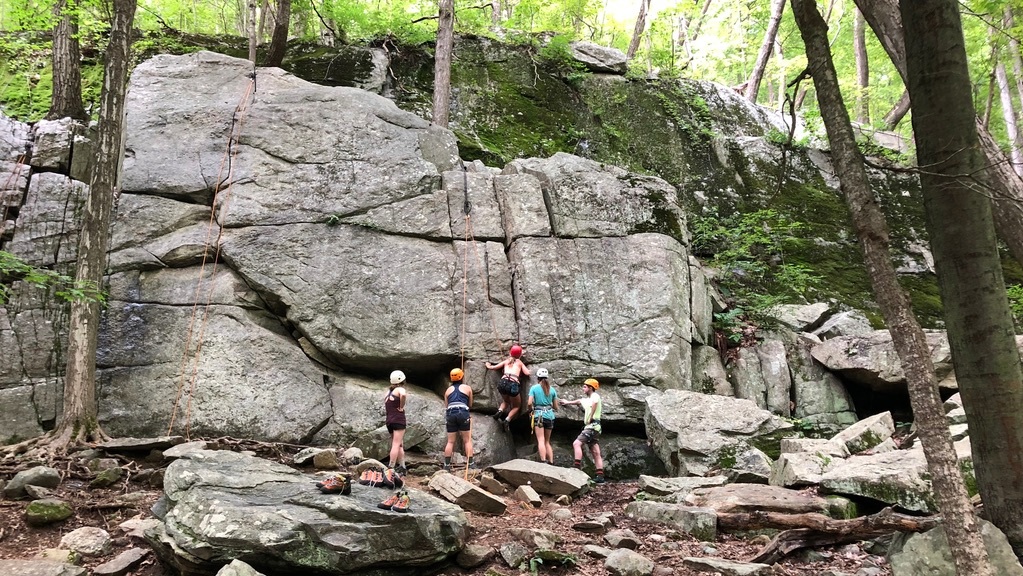St Johns Ledge’s: Kent, CT
Location
St. Johns Ledges is a series of less than vertical slabs and short cliffs that are found east of Caleb’s Peak and above the west bank of the Housatonic River. Although there is a large quantity of climbable rock, most parties are satisfied with the climbing on, what is called, the Upper and Lower ledges. Parking is available along River Rd. at the junction with the Appalachian National Scenic Trail, which runs along the base of the Upper Ledges.
History
St John’s Ledges are named after Timothy St Johns who owned the property in the 1800’s. It was then purchased by the Stanley Works Company in 1910 with the intention of building a dam. The dam still unbuilt in 1976, the Stanley Works Company donated the property to the Nature Conservancy who then sold it to the National Parks Service as part of the Appalachian Trail Corridor. This particular section of the corridor is currently managed by the Connecticut chapter of the Appalachian Mountain Club. It is hard to say when climbing first began at St John’s but at the very least it been trafficked for decades. Currently it is a popular destination for schools, camps and other groups. (Source: Rock Climb Connecticut by Dave Fasulo)
Climbing at St John’s Ledges
The Upper Ledges are friction slabs of up to 100ft in height and offer a collection of easy and moderate routes. Although some of these routes have been led, the gear is sparse and bolts are non-existent. The popular Black Magic is found on the left side of the Upper Ledge and is the prize of the area for the moderate trad climber. The AT crosses underneath the Upper Ledge, so be mindful of where you place your gear. To access the top of the upper ledge, there is a large gully near the north end that can be used to scramble to the top. Since this area is heavily used by summer camps and large groups, a retention wall was built to reduce erosion. This has been updated over the years and was last modified in 2017.
The Lower Ledges have a main area of roughly 10 routes with additional variations. This is a great area for beginner traditional leads and top ropes. The tallest section of the Lower Ledge tops out at 25ft. What it lacks for in height it makes up for in quality protectable short leads. During the summer months of July and August, the Lower Ledge sees more traffic than any other cliff in CT. The cliff base is heavily trafficked and soil erosion and degradation is present. At the top of the cliff, many anchor trees have died over the years from traffic and age. Some climbs can be set up using traditional gear so look closely to see where gear can be used for your TR set-ups.
There are many more ledges and boulders lying in the woods to climbers left including some amazing stemming corners and adventure climbs.
Access Issues
Currently climbing access to St John’s ledges is open. This is one of the reasons for it’s popularity with groups. That said, access is always just one No Climbing sign away from being closed so be respectful and be smart when climbing here.
Notes
Particular hazards include deer ticks that carry lyme disease. While these are present at all CT crags, they seem to have a special affection for St. Johns.

